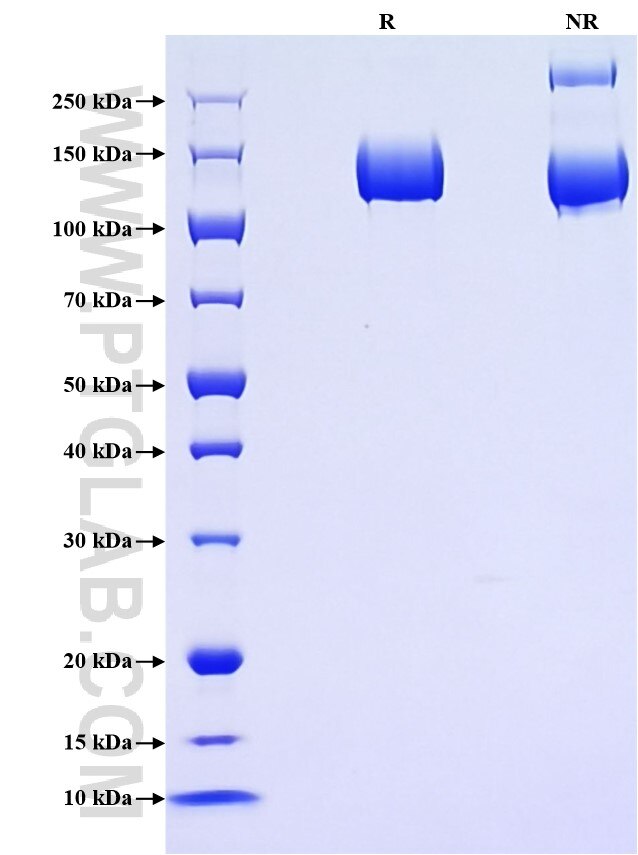Recombinant Mouse CD13 protein (rFc Tag)
Species
Mouse
Purity
>90 %, SDS-PAGE
Tag
rFc Tag
Activity
not tested
Cat no : Eg3592
Validation Data Gallery
Product Information
| Purity | >90 %, SDS-PAGE |
| Endotoxin | <0.1 EU/μg protein, LAL method |
| Activity |
Not tested |
| Expression | HEK293-derived Mouse CD13 protein Asp66-Ser966 (Accession# P97449) with a rabbit IgG Fc tag at the C-terminus. |
| GeneID | 16790 |
| Accession | P97449 |
| PredictedSize | 129.4 kDa |
| SDS-PAGE | 120-150 kDa, reducing (R) conditions |
| Formulation | Lyophilized from 0.22 μm filtered solution in PBS, pH 7.4. Normally 5% trehalose and 5% mannitol are added as protectants before lyophilization. |
| Reconstitution | Briefly centrifuge the tube before opening. Reconstitute at 0.1-0.5 mg/mL in sterile water. |
| Storage Conditions |
It is recommended that the protein be aliquoted for optimal storage. Avoid repeated freeze-thaw cycles.
|
| Shipping | The product is shipped at ambient temperature. Upon receipt, store it immediately at the recommended temperature. |
Background
CD13, also known as aminopeptidase N or membrane alanyl aminopeptidase, is a type II membrane 150kDa metalloprotease with an extracellular oriented catalytic domain. It is a seahorse-shaped molecule and usually forms a head-to-head homodimer by means of hydrophobic interactions. Each monomeric molecule of CD13 possesses a 7-domain organization, which is characteristic of M1 metallopeptidases. CD13 has been termed a “moonlighting enzyme” because of its multiple functions.
References:
1.Wong AH. et al. (2012). J. Biol. Chem 287: 36804–36813. 2.Chen L. et al. (2012). Proc. Natl. Acad. Sci. U. S. A 109: 17966–17971. 3.Sjöström H. et al. (2000). Adv. Exp. Med. Biol 477: 25–34. 4.Mina-Osorio P. (2008). Trends Mol. Med 14: 361–371.
